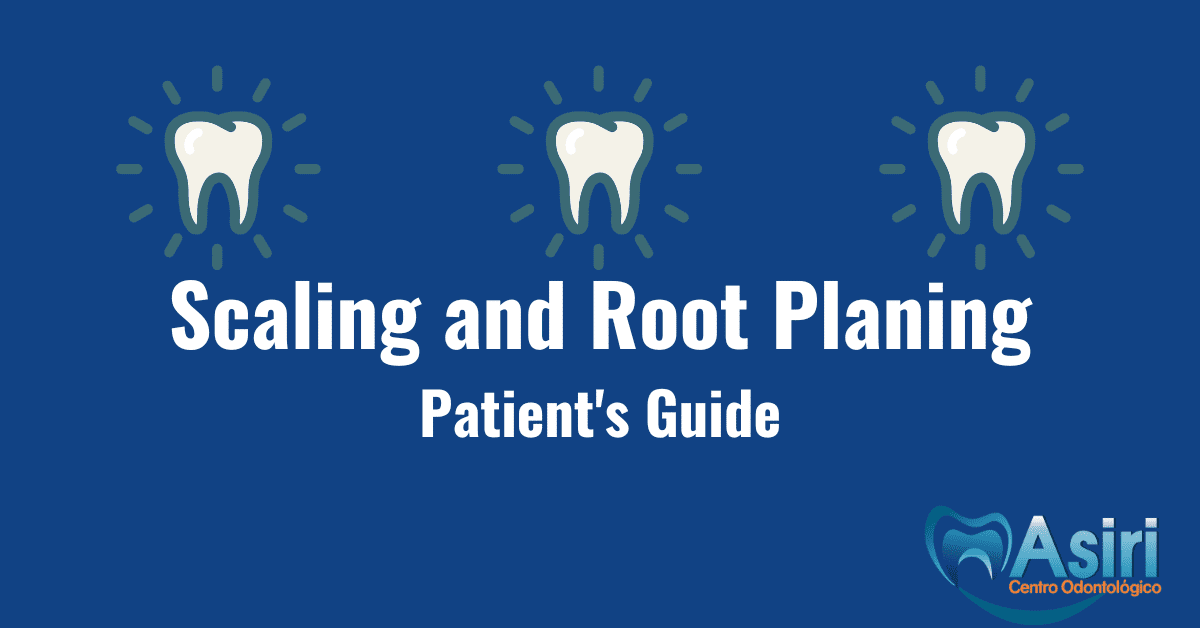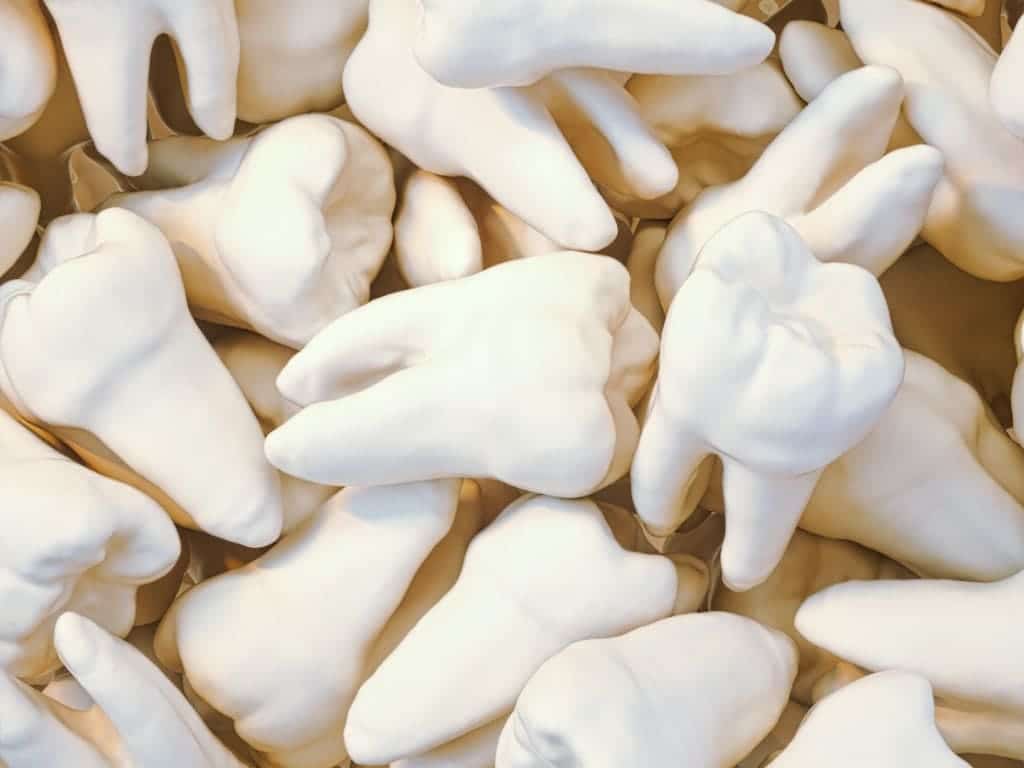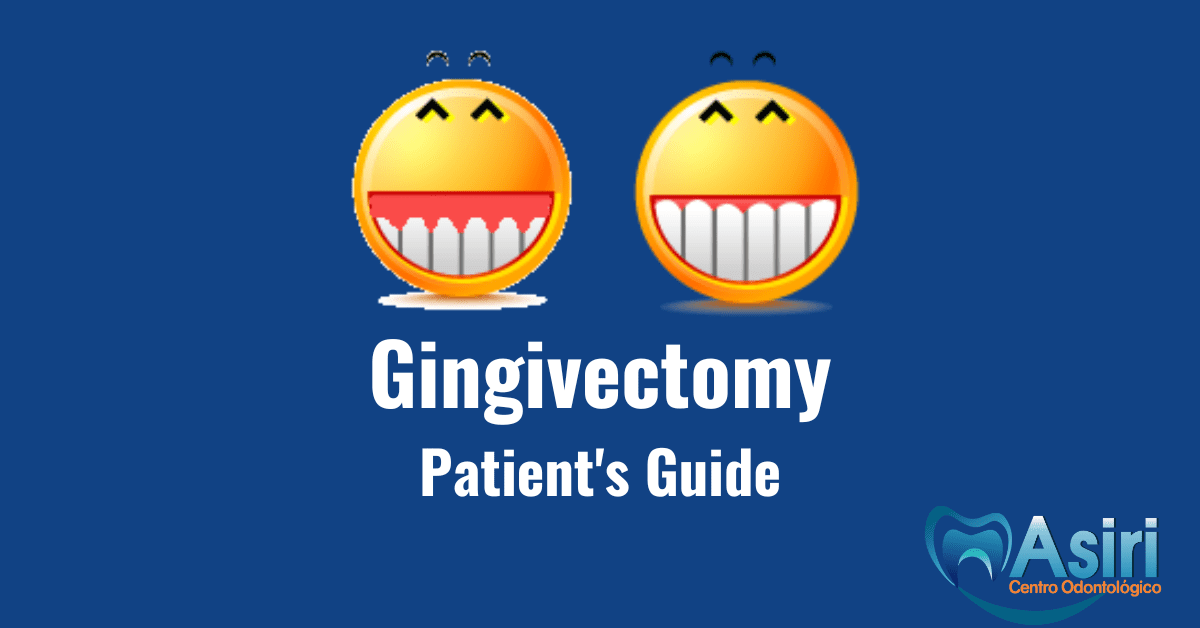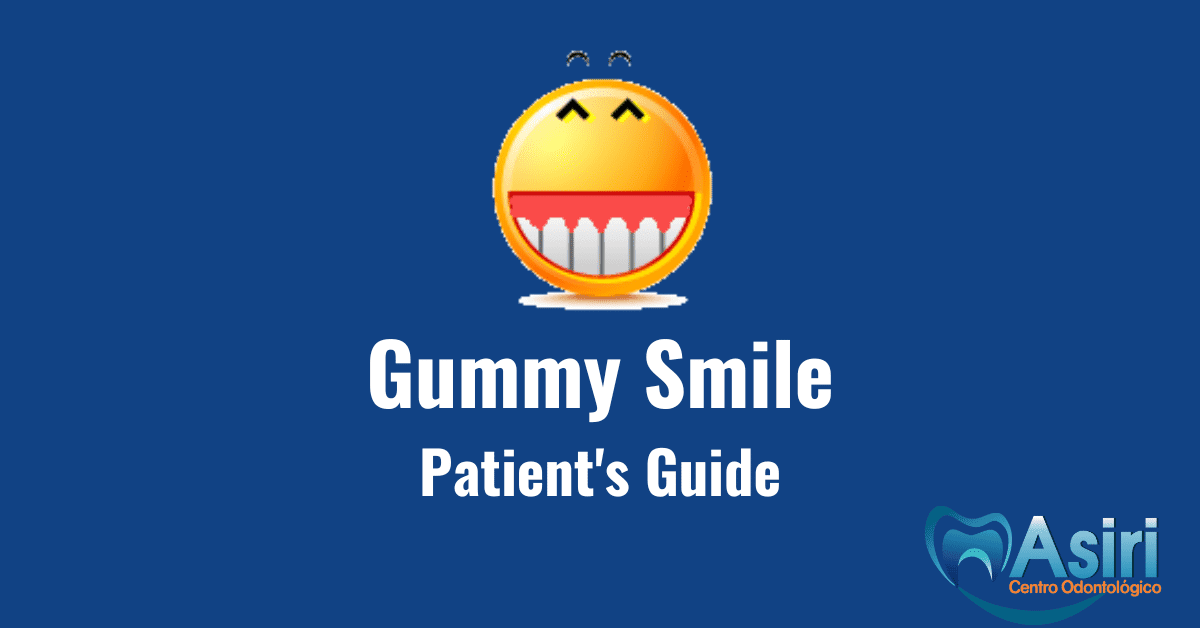The standard and very effective treatment to treat and control periodontal disease (periodontitis) is the Scaling and Root Planing.
At the Asiri Dental Center we offer you an excellent scaling and root planing service in Quito, but first we want you to know all the details of this treatment that will allow you to go to your periodontist and control the progress of this silent and harmful disease.
You will learn from the most basic, such as when it is necessary and its benefits, to recommendations before and after doing it.

Table of Content
What is Scaling and Root Planing (RAR)
The RAR is a treatment of chronic periodontitis, it consists of the union of two mechanical techniques that seek to resolve the inflammation by completely eliminating the local factors of the dental surface that produce it, such as plaque, calculus and altered cement .
The immediate objective of this technique is to achieve a smooth, clean dental surface free of harmful agents.
Once this smooth texture is restored and there are no pathogens, a process of recovery from periodontal inflammation begins.
Difference between Scaling and Root Planing
Scaling
Deep cleaning that removes calculus, plaque, stains and any unwanted organic element found anywhere on the outside of the tooth.
Since tooth enamel is smooth, simple scaling already gives us a smooth surface, but the surface of the roots is not necessarily smooth and damaging agents can hide in these irregularities, which is why root planing is needed.
When the scaling is performed below the gingiva, we call it subgingival scaling and when it is above the gingiva, it is called supragingival scaling.
Root Planing
Due to the irregular characteristics of the surface of the roots (root cementum), achieving a smooth and clean surface requires an additional step, where these irregularities and the plaque and calculus deposits between them are eliminated.
Scaling done without root planing is not enough to eliminate the factors that cause inflammation. This is why both procedures should not be considered or practiced independently
Objectives of Scaling and Root Planing
We have already seen that the immediate objective of an ARR is to achieve a smooth, clean dental surface free of harmful agents, however its real objective goes a little further and is to eliminate or control disease and maintain periodontal health by promoting the recovery of the tissues around the tooth.
Benefits of Scaling and Root Planing
Scaling and Root Planing:
- Improve your quality of life
- Prolong the life of your teeth
- Improve the health of your gums
- Reduce or eliminate the periodontal pockets typical of periodontal disease, reestablishing a biologically acceptable dental surface on which the tissues that were separated are reinserted again
- The tissues partially or totally recover their healthy natural color, as well as its contour and consistency
- Reduces bleeding gums
- Facilitates execution of brushing and flossing.
- Controls Halitosis
Scaling and root planing are effective in combating periodontitis and when combined with good oral hygiene and regular maintenance, these effects can last for several years
Who Performs the Scaling and Root Planing
The RAR can be performed by the General Dentist, however, in more complex cases, it is highly recommended that it be performed by a specialist in Periodontics or as it is known, a Periodontist.
In any case, you need a prior evaluation to determine the level of periodontal disease and with this level already defined, an appropriate treatment plan is made for each person.
When is Scaling and Root Planing Necessary
This treatment is the main treatment used to combat periodontal disease, therefore, in general terms, it is mainly indicated in the following cases:
- People with periodontal disease
- As a preventive measure in people susceptible to generating large amounts of plaque or calculus.
- As maintenance treatment in people with periodontitis.
- If there are periodontal pockets larger than 3 millimeters.
When Scaling and Root Planing is NOT Necessary
When the periodontal pockets are less than 3 millimeters, it is not necessary to do scaling or root planing, only with dental cleanings and appropriate dental hygiene techniques should be sufficient.
Contraindications of Scaling and Root Planing
According to Matos Cruz R. y Bascones-Martínez A. the following cases are identified as cases in which carrying out a RAR is counterproductive
People with poor plaque control and uncooperative, Patients suffering from acute leukemia, agranulocytosis and lymphogranulomatosis, Recent myocardial infarction.
In any case, the previous evaluation is required to determine the convenience or not of the execution of the treatment as well as the joint work with the treating physician.
Treatment Plan
This point can only be defined by your periodontist, however below I will give you some parameters that will serve as a reference
Depending on the complexity of the case, your periodontist will outline the phases in which the RAR should be performed, mainly they are established
Education in Dental Hygiene
The effectiveness of any treatment against periodontitis must be accompanied by excellent education and execution of dental hygiene techniques.
Without excellent dental hygiene, it is very difficult to control periodontal disease.
Definition of Sectors to Treat
The quadrants or sextants that are going to be intervened are defined here. A quadrant is the result of dividing the mouth into four parts, while a sextant is if it is divided into six parts.
The method to be used in each sector is also defined: open-field or closed-field scaling and root planing.
Method to Use
Depending on the complexity of each case, mainly determined by the magnitude of the existing periodontal pockets, RAR can be performed in different ways
Into the Open Country
This method is used in the most complex cases and is a surgery that consists of performing the RAR but displacing the gum in order to better see and reach the surface of the roots.
Once the roots are exposed, it is much easier and more effective to perform the RAR since the periodontist has visibility and better access to pass the instruments.
A Closed Field
This method does not require displacement of the gum and access to the roots is made by inserting special instruments between the gum and the tooth.
Discomfort After a Scaling and Root Planing
If you wonder if a scaling and root planing hurts, the answer is that it is a procedure that is performed under local anesthesia so you will not feel pain during its execution.
After the anesthesia wears off, you may experience some discomfort normal for this type of treatment
Below is a list that can help you get an idea.
- Pain or discomfort in the gums: usually occurs to a greater degree in highly complex cases
- Sensitivity in the teeth: to cold, to heat, to sweets
- Variations in appearance: there may be exposure of roots, appearance of space between the teeth
- Bleeding: There may be some bleeding. It is mitigated by applying pressure with gauze and drinking cold drinks.
Possible Complications after Scaling and Root Planing
Your periodontist will always work in the best possible way, however on some occasions, as in all medical and dental procedures, unwanted situations may arise.
In a general and informative way, here is a list of some of the complications that can be generated when executing a RAR and that if they happen to you, you should notify your doctor immediately:
- Epithelial adhesion damage.
- Bacteremia.
- Periodontal abscess (localized).
- Uncontrolled bleeding.
Periodontal Maintenance
Once a RAR has been executed and with an average frequency of 3 months, you must attend a periodontal control.
This control is called periodontal maintenance and its objectives are tosupervise your periodontal health and take the necessary corrective measures.
According to the assessments of your periodontist, it is possible that in these appointments some treatments or diagnostic studies are carried out that allow evaluating your progress in oral health.
Examples of things that could be done at a maintenance appointment:
- Measurement of pockets or periodontal sacs
- Taking X-rays
- Evaluation of the quality of your oral hygiene practice
- Prophylaxis, cleanings or Supragingival scalings
- More complete scalings in case of periodontal pockets greater than 3 millimeters.
Conclusions
Scaling and root planing is an excellent treatment, but it needs your collaboration so that its success is possible.
It is very important that:
- Attend periodontal maintenance appointments
- Maintain neat oral hygiene habits
- Avoid eating foods high in sugar
- If applicable , give up smoking. The cigarette which is proven is a factor that generates periodontal disease.
By following these tips and the indications of your periodontist, you have won a large part of the battle.



